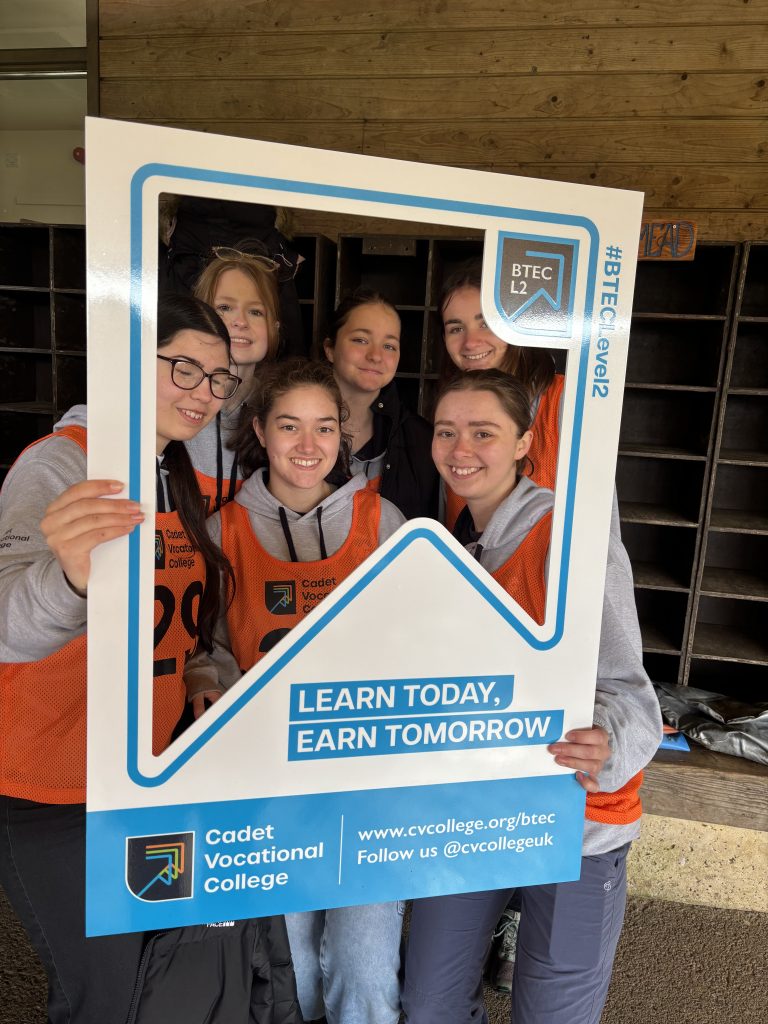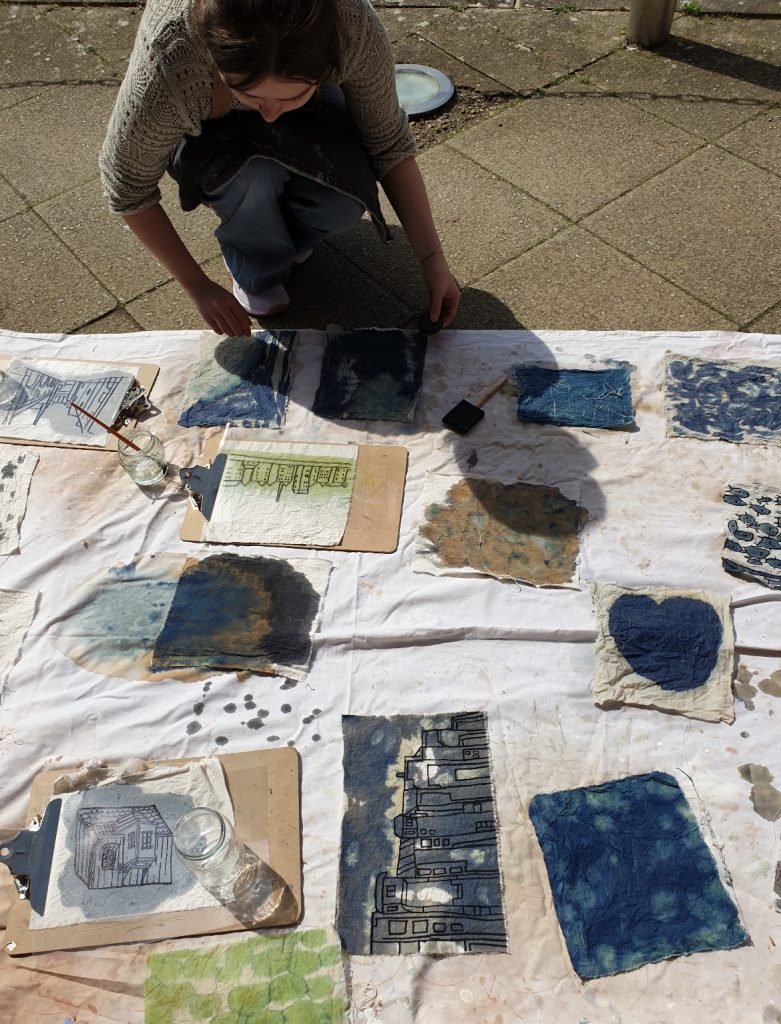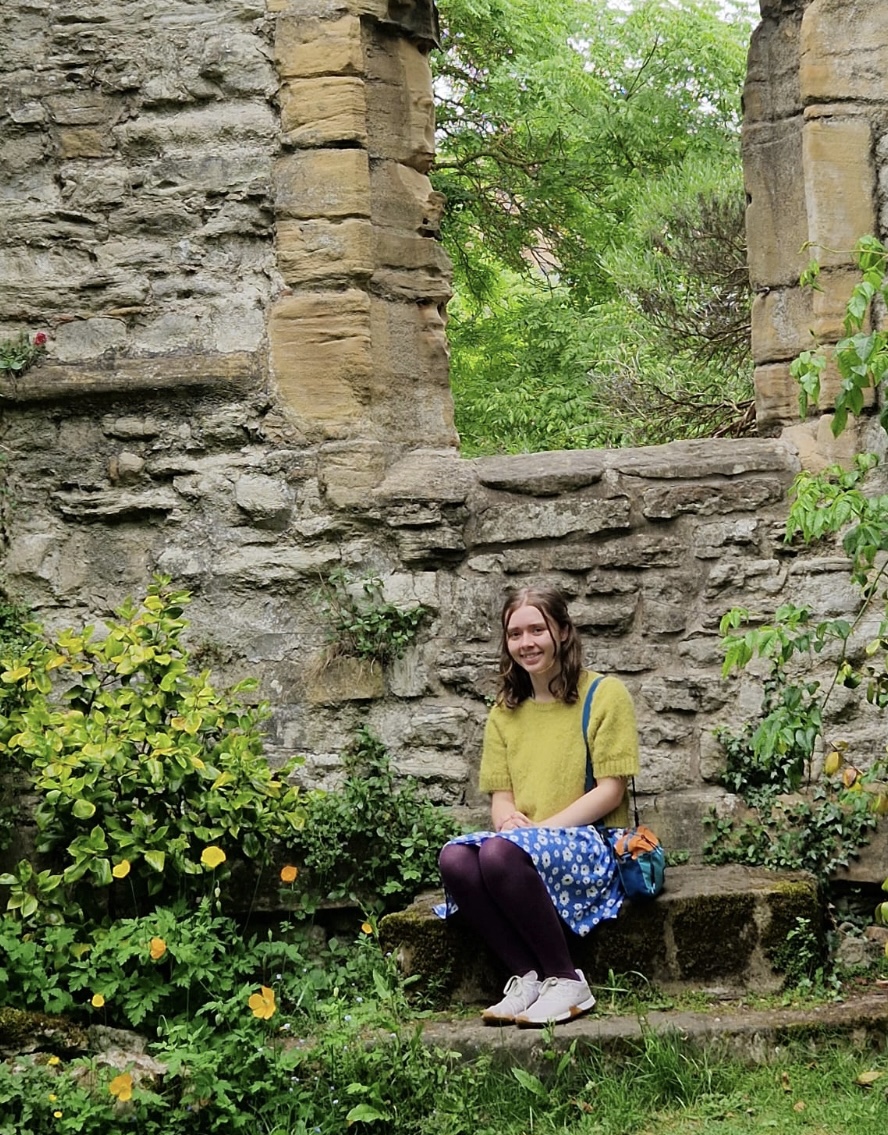We spoke with Martha, a former Craft&Making Saturday Club member and current Youth Board participant, about how the Club helped them grow creatively and personally. Home-educated and passionate about making, they joined to explore heritage crafts and connect with others through creativity. The experience gave them new skills and a sense of belonging that shaped their future goals. Now studying arts and humanities, Martha is focused on using creativity for wellbeing and social change.
What sparked your interest in attending a Craft&Making Saturday Club?
I’ve always done a lot of craft – it’s something I’ve used both as a creative outlet and for mental health. It’s a way for me to connect with people too, so when I heard about the Club, I thought it would be something I’d love to do.
What really drew me in was the heritage craft side of it that you wouldn’t normally do at home. Like, sure, I can crochet, but I’d never had access to the tools or space to try weaving or woodwork. So being able to actually use those tools and learn those skills was amazing. That’s what really got me interested.
Was there a difference between what you were doing at school and what you were doing at the Club? Tell us about your experience at the Club
It was a bit different for me because I was home-educated until I joined the national curriculum at 16, so I didn’t come from a traditional school setting. But even then, the Club felt totally different.
At home, most of what I did was academic. But then I’d go to the Club on Saturdays and suddenly I was doing creative work with proper tools and artists. They’d bring in visiting artists, sometimes linked to exhibitions at the gallery, and we’d get to do workshops with them. That was completely new for me.
It taught me loads, especially things like working to a brief and collaborating with other people, which I hadn’t really done before. It ended up helping me later when I started doing more vocational art studies.
What was the social side of the Club like for you?
A lot of us were home-educated, so we already kind of knew of each other through our parents, but we weren’t all friends yet. I remember worrying, thinking, what if we just didn’t get on at all.
But through working together on all these creative activities, we did become friends. One memory that really sticks out was learning how to cyanotype, it’s this amazing process where you use sunlight and chemicals to make images. None of us had done it before, and we were all just completely amazed by how it worked.
That moment really brought us together. The kind of conversations and friendships that came out of working together practically like that – those just wouldn’t have happened in a typical academic setting.
Did you learn about different careers you can go into?
100%. I’ve always been creative and knew I wanted to be an artist in some way, but the Club really opened my eyes to careers I didn’t know existed.
We met artists who weren’t just doing exhibitions, they were leading community projects, working with young people or older people, using art to connect people. We even had the chance to get involved with a local community arts summer festival. That really stuck with me, especially because exhibiting art has never been something that appealed to me personally.
It made me realise that I could use creativity for community work, for activism, for building connections between generations. And honestly, without the Club, I don’t think I would’ve known that was even an option.
If you could curate your dream exhibition, what would it be about?
Textiles really fascinate me. I remember one workshop we did where we embroidered over paintings and photographs, and I absolutely loved it. I’d love to do something around that idea, maybe an exhibition where people bring in their own family photos and we embroider them together or even use images from the news that are politically or emotionally significant.
There’s something powerful about combining images and hand-embroidery, it’s really visual and personal. I love the idea of making it a community thing, where everyone brings their own interpretation. That kind of shared creative space is what really excites me.
Do you have any standout memories at the Club?
One that really stayed with me was from when we were learning how to cyanotype. It was around May or June, and I remember just sitting there, feeling genuinely happy.
At the time, I’d been struggling quite a bit with my mental health, and that day felt like a turning point. Not because the Club fixed everything, but because it was a moment where I realised how far I’d come. I was surrounded by people who had become my friends, and we were all just working and connecting through something creative.
It wasn’t some huge celebration or ceremony – just a quiet, powerful moment that made me feel really welcome and included. That’s what stands out most.
In terms of your future, what would you like your next steps to be?
I’m only 17, so I don’t have it all figured out yet! But I know I want to work with people and creativity. I’m really interested in community-based art and maybe even creative therapy.
I’ve seen firsthand how powerful creativity can be in creating safe, open spaces and helping people connect. I’d love to bring that into healthcare or wellbeing, something that bridges both my interests in art and in science or medicine.
How has the National Saturday Club helped influence what you are currently doing?
I’m doing art now, and next year I’m switching into arts and humanities. One module I’m especially excited about is looking at global challenges through art, which just feels so relevant. Science is so important, but so is creativity.
The Club gave me the confidence to believe that my creativity could have a place, not just in galleries, but in wellbeing, even in medical spaces. It helped me see creativity as something much broader than painting and hanging things on walls, it’s about people.
Did you learn any specific skills at the Saturday Club that you still use today?
One of the biggest things I took away was confidence. I started when I was 15, and by the time I left I was 17, and that change in confidence was massive.
But it wasn’t just about speaking up, I also learned how to really listen to other people, which is just as important. That balance, between having your voice heard and really hearing others, has been such a valuable skill for everything I’ve done since. It really opens those doors to understanding different people’s views and opinions and building those connections.
Why did you decide to join the Youth Board?
Me and a friend were on the train back from the Summer Show and graduation, and we saw the Youth Board call out in The Post (Club member end-of-year publication). We just thought, “why not?” and applied right there.
At the time, I didn’t even realise there were other ways to stay involved like becoming a Student Assistant. I thought I’d have to say goodbye to the Club forever. But applying to the Youth Board felt like a way to continue the journey and give something back, to help keep it accessible and welcoming for others.
Since being part of it, what has your experience been like and have you learnt anything new?
Honestly, it’s been amazing – it may sound dramatic but it’s one of my favourite things I’ve done this year. Everyone on the Youth Board is so full of ideas and energy, and it’s just really uplifting.
In other activism work, I sometimes feel like I’m pushing against resistance, but the Youth Board is a space where people want to be there. Everyone’s different, but there’s this shared commitment to listening and growing.
And for me, coming from a really rural, not very diverse place, it’s been incredible to meet people from so many different backgrounds. I’ve learnt so much just from those conversations. I’ve never been on a board before, never even been in that kind of setting, and it was a bit overwhelming at first but it’s so supportive, and now I feel like I’ve really grown in confidence and communication.
Who, what or where inspires you?
I’m really inspired by the people who came before me, people of my faith, queer people, people from all sorts of communities who fought hard so we could be where we are today.
As a queer person of faith, I know that where I am now isn’t just because of me, it’s thanks to those who came before. That gives me a sense of responsibility too – to do my part, to make things better for the people who come after. That’s what drives me.
If there’s one thing that you could make better in the world, what would it be?
I think I’d want people to value each other more. So much of what’s wrong in the world comes down to people not valuing others, ignoring or dismissing them.
If we all just made a bit more effort to listen, even when we disagree, and connect human to human, I think the world would be a much better place. That sense of shared humanity, of listening without needing to agree, is something I really believe in.



Interview conducted and edited by Suprina Thapa